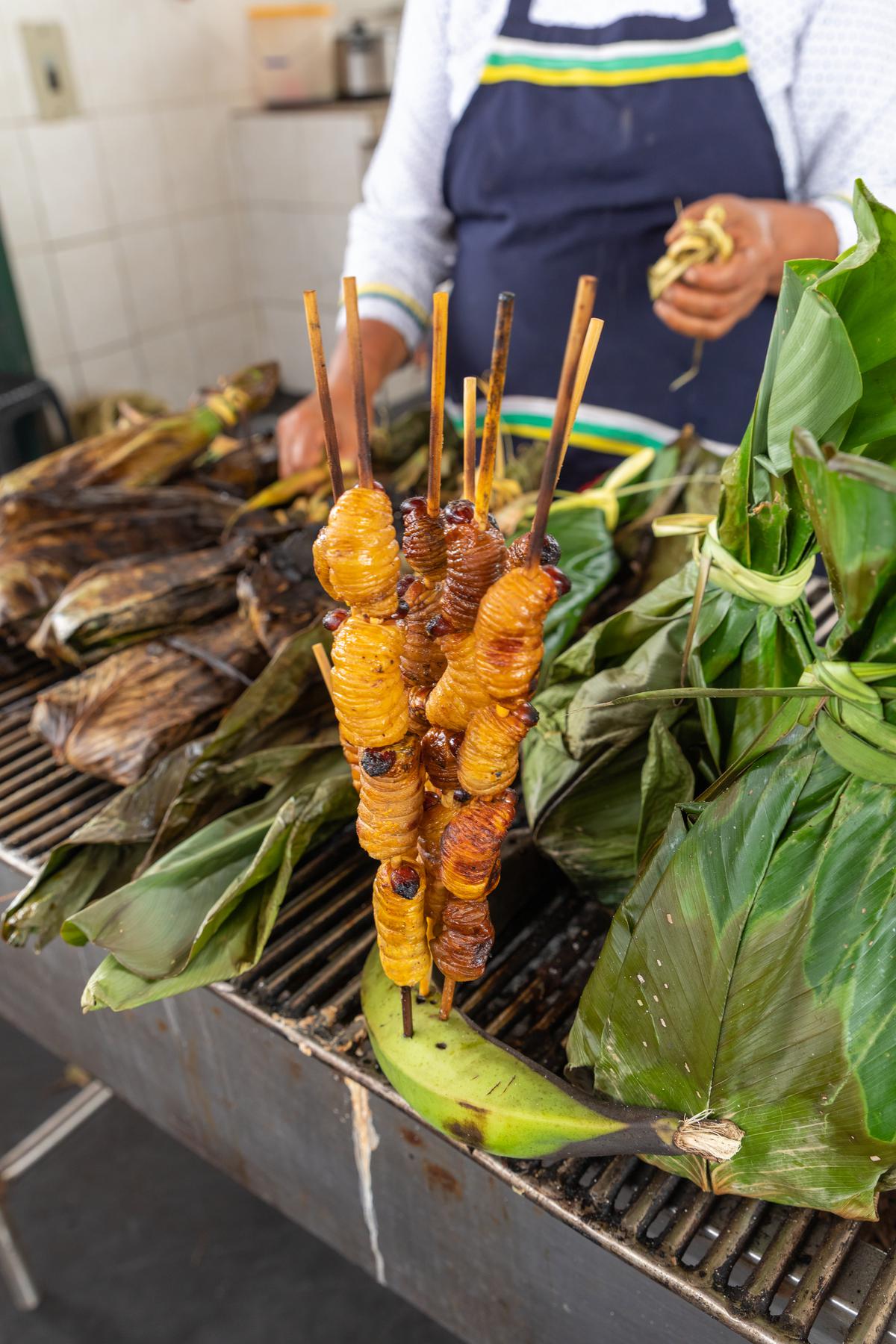
Edible palm weevil larvae (Rhynchophorus phoenicis) at a traditional food market in Puerto Francisco de Orellana, Ecuador.
| Photo Credit: Getty Images/iStockphoto
We depend on insects in many ways for producing food for the world’s population. They pollinate our crop plants, break down decaying plant and animal matter, and are natural pest controllers. We also consume honey from honeybees.
Insects are all around us. However, many of us would be reluctant to indulge in entomophagy, to eat insects or their larvae. One reason for this is probably neophobia, the fear of trying out anything new.
At the same time, humans are currently worried about the overexploitation of the planet. There is a need for foods that provide high-quality calories without consuming large amounts of natural resources. Insects fit the bill. Their protein content is typically 40% by dry weight, the fat content 20-30%, and they also have minerals like potassium and iron.
Nearly a fourth of the world’s population already eats edible insects. Some insects are regarded as delicacies. Mexican escamole, known as the “caviar of the desert”, tastes like richly buttered baby corn but is the fried pupae and larvae of the velvety tree ant. The chef Sheril Kirshenbaum discussed tasteful insect menus in a 2023 episode of ‘Serving Up Science’ on PBS.
In India, edible insects are consumed among Indigenous communities in the Northeast States, Odisha, and in the Western Ghats. The practice is rooted in nutritional needs, cultural habits, and folk medicine. Tribal and rural populations in the Northeast reputedly consume more than a 100 edible insect species for their proteins, and they are also sold in local markets. Fried, roasted or cooked, certain beetles, moths, hornets, and water bugs are preferred — although flies are not.
Collecting insects from nature may not be sustainable as insect populations may be depleted. Some groups have thus taken up semi-domestication, where insects and their larvae are nurtured and harvested by humans. Ethnobiologists at the Nagaland University in Lumami have been studying traditional methods of insect farming and how they can be adapted to cultivating new species.
The Chakhesang and Angami tribes of Nagaland and Manipur consider the Asian giant hornet a delicacy, including roasted adults and fried larvae. This hornet is now semi-domesticated. Its cultivation begins by locating a nest, which is transported to a 1-metre-deep rearing pit that is loosely filled with soil. The empty nest is anchored to a pole just above the pit and covered with loose soil. A queen soon arrives with worker hornets, which begin enlarging the nest below the ground. The result is a large multilayered structure resembling an inverted pyramid. For the harvest, adult hornets are smoked out and the larvae are extracted.

Tribal groups around the Annamalai Hills in Tamil Nadu use weaver ants as a culinary and medicinal resource. Leaf nests containing eggs, larvae, and adults are roasted and then stone-ground to create a spiced soup. Similar preparations utilising the nests of other wasps, termites, and bees are also consumed as health supplements to alleviate respiratory and gastrointestinal ailments.
The World Health Organisation has opined that insects in diets may be the key to achieving sustainable food production. Insect processing strategies may make them more acceptable. Grasshopper, locusts, and cricket powder (or flour) is now used as a protein supplement in the same manner as whey powder. As dietary trends evolve, as we get used to dryland millets and grow curious about lab-grown meats, we may well have insects on our plates soon.
This article has been coauthored with Sushil Chandani.
Published – October 18, 2025 09:00 am IST











Leave a Reply